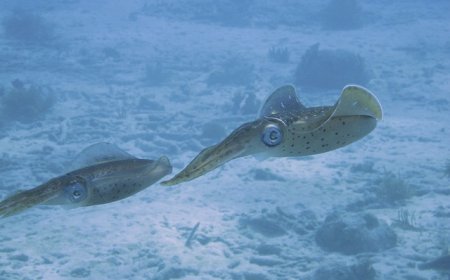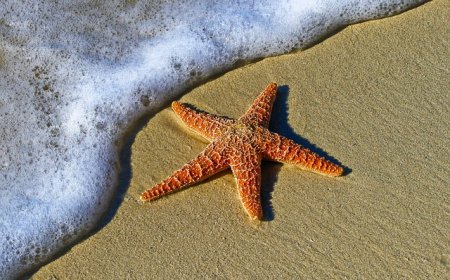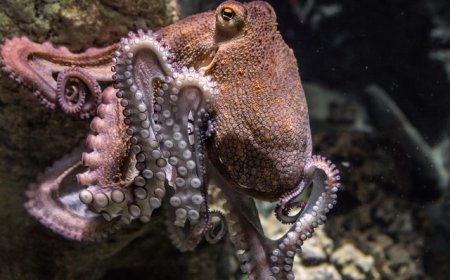Nautilus Facts for Kids – Spiral-Shelled Survivors
🐚 Nautilus: Spiral-Shelled Survivors of the Deep Sea
The nautilus is one of the oldest and most mysterious animals in the ocean. It has lived in Earth’s oceans for over 500 million years, earning it the nickname “living fossil.” With its beautiful spiral shell, many soft tentacles, and deep-sea lifestyle, the nautilus is a true treasure of the marine world.
Unlike most other cephalopods (like octopuses and squids), the nautilus keeps its shell—a spiral-shaped home with internal chambers it uses to control its buoyancy. It moves gently through the deep ocean using jet propulsion, staying mostly hidden in the dark.
🌍 Where Nautiluses Live
Nautiluses are found in the warm, deep waters of the Indo-Pacific Ocean, especially around:
- Indonesia
- The Philippines
- Papua New Guinea
- Fiji and Australia
They live at depths of 300 to 1,000 feet (90 to 300 meters) during the day, and may swim closer to the surface at night to feed. Their hard shells help protect them from pressure in deep water.
🧬 Body Structure and Adaptations
The nautilus has a hard, coiled shell and a soft body. Key features include:
- A spiral-shaped external shell with up to 30 inner chambers
- Up to 90 small tentacles with sticky surfaces (no suckers)
- A large eye for detecting light and dark
- A funnel (siphon) used for jet propulsion
- A hood to seal the shell when it withdraws
As it grows, the nautilus moves into a larger chamber, sealing off the old ones. These chambers are filled with gas or water, allowing the animal to float or sink by adjusting its buoyancy.
🐙 How Nautiluses Move
Nautiluses move using a method called jet propulsion:
- They suck water into their bodies
- Push it out through a funnel (siphon)
- This creates a small burst that moves them backward
They steer by changing the direction of their siphon. Nautiluses are not fast swimmers—they prefer to float slowly through the water, saving energy.
🍽️ What Nautiluses Eat
Nautiluses are scavengers and hunters. They eat:
- Crabs and small shrimp
- Dead animals (carrion)
- Fish
- Small marine worms
They use their tentacles to grab prey and bring it to a sharp, beak-like mouth. Nautiluses are mostly nocturnal feeders, rising toward the surface at night to search for food.
🛡️ Defense and Survival
The nautilus has many survival tricks:
- A hard outer shell protects it from predators like sharks and large fish
- It can pull its body into the shell and close the opening with a leathery hood
- Its shell pattern helps it blend in with the ocean’s shadows and light
- It can control its buoyancy to escape predators by sinking or floating
Unlike other cephalopods, the nautilus does not have ink, but its strong shell makes up for that.
🐣 Life Cycle and Reproduction
Nautiluses reproduce slowly:
- Males and females mate by transferring sperm with a tentacle
- Females lay eggs on hard surfaces
- The eggs take up to a year to hatch
Baby nautiluses look like tiny versions of adults and are about the size of a marble when born. They already have shells with several chambers and do not go through a larval stage.
Nautiluses grow slowly and can live for up to 20 years, much longer than other cephalopods like squids or octopuses.
⚠️ Threats and Conservation
Nautiluses face several modern threats:
🚨 Threats:
- Overfishing, especially for their beautiful shells sold as souvenirs
- Habitat destruction, including coral reef damage
- Slow reproduction, which makes population recovery difficult
- Climate change, which affects ocean chemistry and habitats
🛡️ Conservation efforts:
- CITES protection (international treaty limiting shell trade)
- Marine protected areas
- Research and monitoring programs
- Public education about protecting ancient marine species
The nautilus reminds us how important it is to protect our oceans’ oldest creatures.
🎉 Fun Facts About Nautiluses
- Nautiluses are called “living fossils” because they’ve changed very little in 500 million years
- Their shell is a natural example of a logarithmic spiral—a beautiful pattern seen in nature and art
- They can have up to 90 tentacles, but no suckers like an octopus
- They control buoyancy with gas-filled chambers
- Nautiluses have very poor eyesight, but an excellent sense of smell
🧠 Vocabulary List
- Nautilus – A shelled marine mollusk related to squids and octopuses
- Cephalopod – A group of mollusks with tentacles and soft bodies (like octopus, squid, and nautilus)
- Chamber – A sealed space inside the nautilus shell used for buoyancy
- Tentacle – A long, flexible limb used for grabbing and sensing
- Siphon (funnel) – A tube-like organ used for movement by pushing out water
- Beak – A hard mouthpart used to bite and chew food
- Scavenger – An animal that feeds on dead or decaying matter
- Buoyancy – The ability to float or sink by changing internal gases
- Living fossil – An animal that has changed very little over millions of years
- CITES – A global agreement that helps protect endangered species
✅ Nautilus Quiz: Can You Crack the Shell?
1. How does the nautilus move?
A. Kicks its legs
B. Uses fins
C. Jet propulsion with its siphon
D. Swims with its tentacles
✅ Answer: C. Jet propulsion with its siphon
2. What makes the nautilus float or sink?
A. Tentacles
B. Muscle power
C. Gas-filled chambers in its shell
D. Heavy shell weight
✅ Answer: C. Gas-filled chambers in its shell
3. How many tentacles can a nautilus have?
A. 2
B. 8
C. 20
D. Up to 90
✅ Answer: D. Up to 90
4. What does “living fossil” mean?
A. It's made of rocks
B. It’s found in fossil beds
C. It’s an animal that hasn’t changed much over millions of years
D. It lives in caves
✅ Answer: C. It’s an animal that hasn’t changed much over millions of years
5. Why is the nautilus endangered?
A. It eats too much
B. It grows too fast
C. People collect its shell
D. It fights with sharks
✅ Answer: C. People collect its shell
🧒 Kid-Friendly Summary
Nautiluses are deep-sea mollusks with spiral shells and dozens of tentacles. They swim slowly by jetting water, eat tiny animals, and float up and down using gas in their shells. They’ve been around for hundreds of millions of years—even before dinosaurs!
Today, nautiluses need our help to stay safe from overfishing and pollution. Protecting these ancient ocean explorers helps keep the deep sea full of wonder.




















































